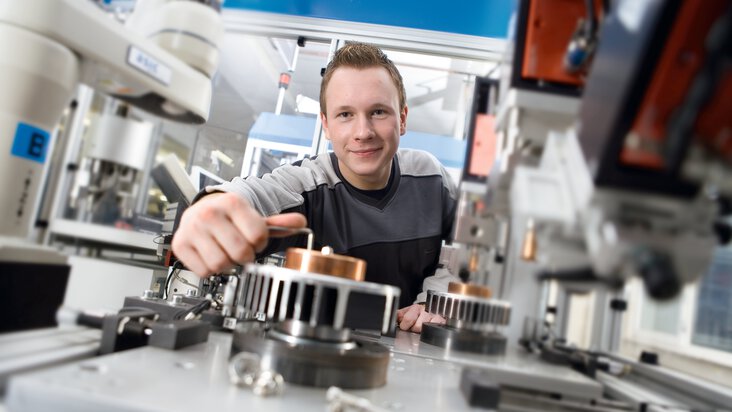

Life in Fulda
Maintaining a work-life balance is one of JUMO's principles. That is why the surrounding environment plays a decisive role when choosing one's place of work. With great educational facilities and a diverse range of sports, cultural, and leisure activities, the region of Fulda is one of the best environments for you and your family. You're unlikely to find the same high-quality living standards for the same low prices in any other region in Germany.
That is why Fulda is a place worth living in and loving
- Live where other people go on vacation
- Family-friendly region
- Site with the best location
- Sports, cultural, and leisure activities
I moved to Fulda because of my job and made this place my new home. What I value in particular are the people and the high-quality living standards in the region.
Live where others go on vacation
Fulda is unique in that it is the only place where the city, district, and river all share the same name. And what many don't know is that, compared with other districts and federal states, it often ranks much higher. According to a focus study, Fulda is deemed the best region in which to live in all of Hessen, Rhineland-Palatinate, and Saarland.
The cathedral city of Fulda has one of the largest enclosed baroque quarters in Germany and, at the same time, is nestled directly on the UNESCO Rhön Biosphere Reserve with the Wasserkuppe, the highest mountain in Hessen. Here in Hessen's "Central Park", you can live where others come on vacation.
Family-friendly region
The district of Fulda is very family friendly. This view is substantiated by the federal government's "Familienatlas" (website for families in Hessen), according to which Fulda belongs to the top 25 regions for families in Germany. The following factors stood out:
- Excellent employment level figures
- Larger and more affordable living space
- Good child care options (also with baby minders)
- Small school classes
- Low levels of violent crime
- Well over 100+ play areas, such as skater parks, playgrounds, and amateur football fields
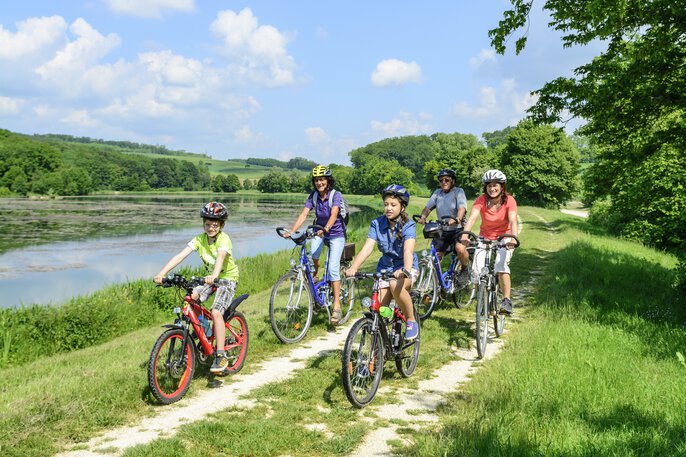
Ideal for family outings to green spaces
Site with the best location
Fulda is also a captivating place due to its geographical location. It is situated between the three states of Hessen, Bavaria, and Thuringia and has the advantage of its proximity to the Rhine-Main region. Via the highway (A66) or with the ICE high-speed train it only takes around an hour to get to Frankfurt and its international airport. The ICE Fulda station is actually very important. With the ICE, you can travel to Berlin, Hamburg, Munich, Stuttgart, and Cologne within just three hours.
From Fulda it isn't just easy to travel to other German cities. As a center for administration and trade itself, it has a commuter belt of around 400,000 inhabitants. In 2012, the city had a centrality rating (important for trade) of 213, the second highest of all mid-sized German cities.
Sports and leisure activities
As one of the most remarkable low mountain ranges in Europe, the Rhön was recognized as a biosphere reserve by UNESCO in 1991. It is also a popular destination for outings and offers a great many sports and leisure activities.
Whether you enjoy cycling, mountain biking, climbing, horse riding, canoeing, playing golf, or hiking, this is a place where you can do all sorts of sports activities. The Wasserkuppe offers a wide range of sports and leisure activities all year round, including gliding and powered flight activities, hang-gliding and paragliding. You can also do winter sports in the Rhön.
- 6,000-km-long hiking route network
- Cycling
- Nordic Walking
- Cross-country skiing
- Climbing in Hessen's highest-located ropes course
- Gliding and powered flight activities
- Hang-gliding and paragliding
- Alpine skiing
- Tobogganing and bobsleighing
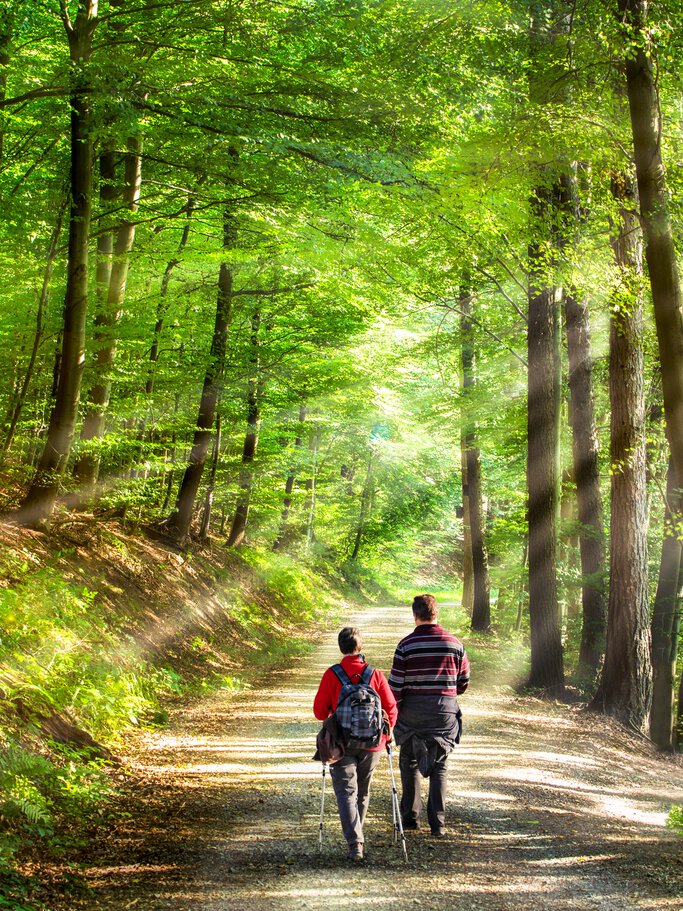
The region features spectacular hiking routes

Paragliding over the Wasserkuppe
High-quality living standards in the city
The urban area of Fulda also offers a diverse range of sports and leisure activities for the whole family. Whether bowling, cinema, or go-karting – in Fulda there is something for everyone. There are also parks for walking or taking a stroll, and also for playing in. The highly popular Schlossgarten for example, situated in the heart of Fulda, attracts visitors with charming rows of flowers, water games, and areas for relaxation. There is also a wide range of opportunities for doing sports and recreational activities, including a ball court, tennis court, gliding field, and equestrian centre.
Overall Fulda has more than 30 sports venues for doing leisure activities, such as the Sportpark Johannisau (stadium), which has football pitches (grass and artificial turf), athletics competition sites, and tennis courts. You'll also find three modern swimming pools: the outdoor pool Freibad Rosenau ("Rosenbad") and the two indoor swimming pools Sportbad Ziehers and Stadtbad Esperanto. For a city of this size, that is a substantial offering and one for which Fulda has earned its title as the "Bäderstadt" (city of bathing). Other swimming facilities within the district include the outdoor pool Freibad Waidesgrund, the swimming school SVK Schwimmschule Künzell-Fulda-Petersberg-Eichenzell, and swimming world Sieben Welten. The latter is a thermal spa and leisure pool situated in the nearby town of Künzell, where you can enjoy a variety of bathing and sauna worlds, massages, treatments, and delicious food.

The Schlossgarten park is an inviting place for taking a stroll, relaxing, and playing
Between culture and cuisine
Culture includes more than just impressive art, but good food, as well. This is something you'll find on every street corner in Fulda. And for days out in the region, there are also plenty of places that serve excellent dishes. The menus in the countless restaurants are brimming with home-style cooked meals, which, of course, includes the regional specialities. There are also several restaurants of differing price brackets that serve dishes from around the world.
"Schwartenmagen" and Sushi
Fulda's speciality is brawn called “Schwartenmagen”. This popular cold cut terrine is available at both the butchers, stuffed in a bladder or glass, and in restaurants, where it is served with bread, dished up fried with roast potatoes, or presented as a burger or Bratwurst sausage. If this sounds too hearty for you, you can embark on a culinary journey throughout China, Greece, India, Italy, Japan, Latin America, Mongolia, Spain, Thailand, and Turkey instead, and enjoy many other scrumptious dishes. And those of you who know your beer will appreciate the region's brewing produce, which can be sampled at a craft beer tasting. Fine spirits, brandies, Korn (grain spirit), whiskeys, vodka, and gin are also produced in the Rhön.

The region is renowned for its meat specialities, especially brawn.
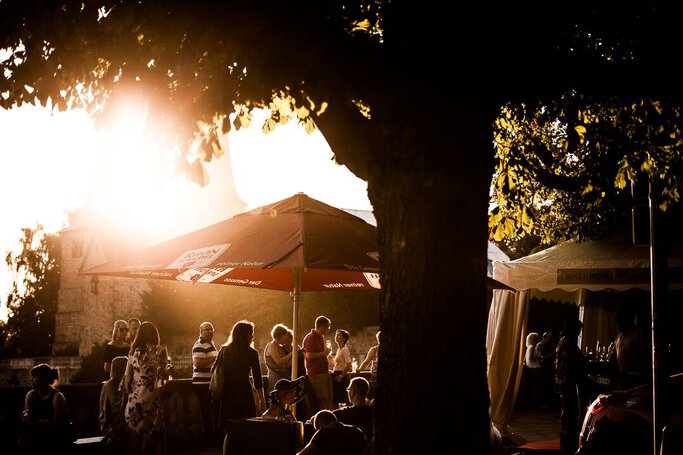
Every year, people flock to the Genussfestival to enjoy delicious food and live music. ©Genussfestival Fulda

Revel in live music in clubs and at open-air events
A musical city
Fulda is well-known for its musicals, especially ones set within a historical framework. For 20 years, the musicals have been performed with great success every year from June to September. In recent years, "Die Päpstin" (Pope Joan), based on the novel by Donna W. Cross, the award-winning stage production of "Der Medicus" (The Physician) based on the international bestseller by Noah Gordon, and "Robin Hood" by Chris de Burgh and Dennis Martin have enjoyed great success on the stage at Schlossplatz (castle square). No wonder that "Die Päpstin" (Pope Joan) is back on the program of the musical summer. In its anniversary year, the musical "Bonifatius" (Boniface) will be performed as an open-air production on Domplatz (cathedral square) as a special highlight. The historical drama about the founder of the Fulda monastery was first staged as a musical in 2004 and initiated Fulda's development into a musical city.
Music lovers will also enjoy attending the regular concerts, which feature regional artists from all kinds of genres, whether rock, pop, singer-songwriters, jazz, or heavy metal. You can also see national and international stars live in Fulda.
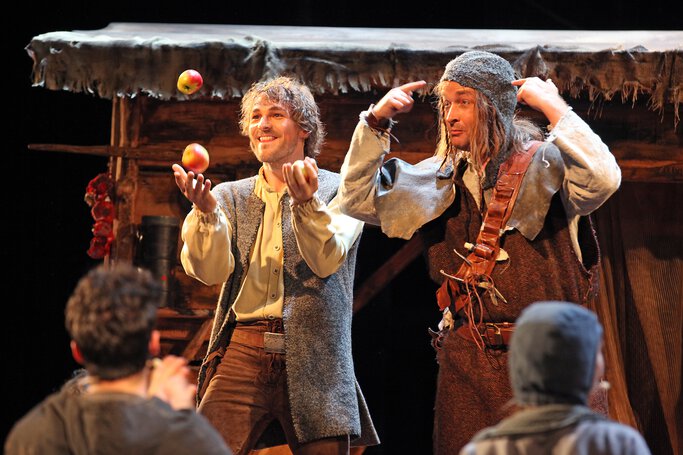
The musical "Der Medicus" has enjoyed immense popularity beyond the region. © spotlight musicals GmbH

The musical "Die Päpstin" also attracts music lovers to Fulda from far and wide. © spotlight musicals GmbH
Culture, nature, and art in Fulda's museums
The connection between music and museums is bridged by "Erlebniswelt Blockflöte" owned by the traditional manufacturer Mollenhauer. This museum is devoted to the recorder, and teaches you about its basic form, material, acoustics, and much much more. There are also exhibitions about the history of the recorder, with a timeline of the Mollenhauer family and an insight into the workshop.
Another noteworthy museum in Fulda is the Vonderau Museum. With almost 4,000 m² of exhibition space, it is the largest museum on the stretch between Kassel and Frankfurt. This is where you'll encounter culture, nature, and art with a regional focus. These days, the museum houses three permanent exhibitions – on cultural history, natural history, and on painting and sculpture, all with a regional focus – as well as a small planetarium.
Anyone interested in fire engines and history should stop by the German Fire Brigade Museum in Fulda. It explains the history of fire fighting from the dawn of mankind and the first form of German fire protection in the Middle Ages through to the present day. You'll be able to amaze at fire engines from different epochs and try out a hand pump yourself.
A great day out for the whole family is the Kinderakademie children's museum. Here, children can explore the "Begehbare Herz", a 5-m-high, 36-m2-large area where you can "walk" through the heart, and learn all sorts of facts about the heart and the cardiovascular system. There is also an extensive workshop and study programme.
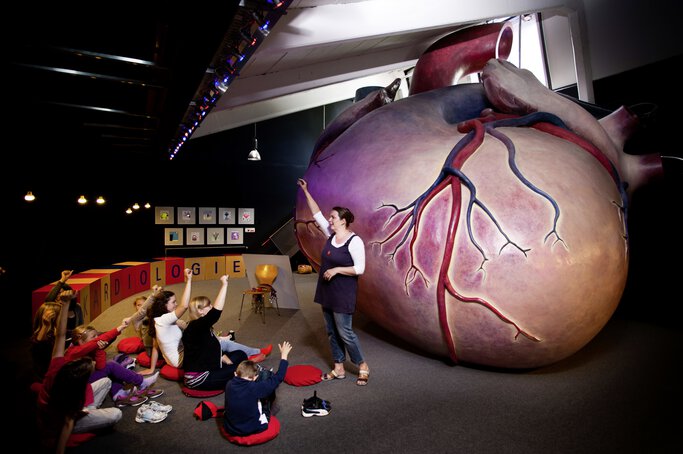
In the Kinderakademie in Fulda, children can learn about the heart in an interactive way. © KAF/Andreas Reeg
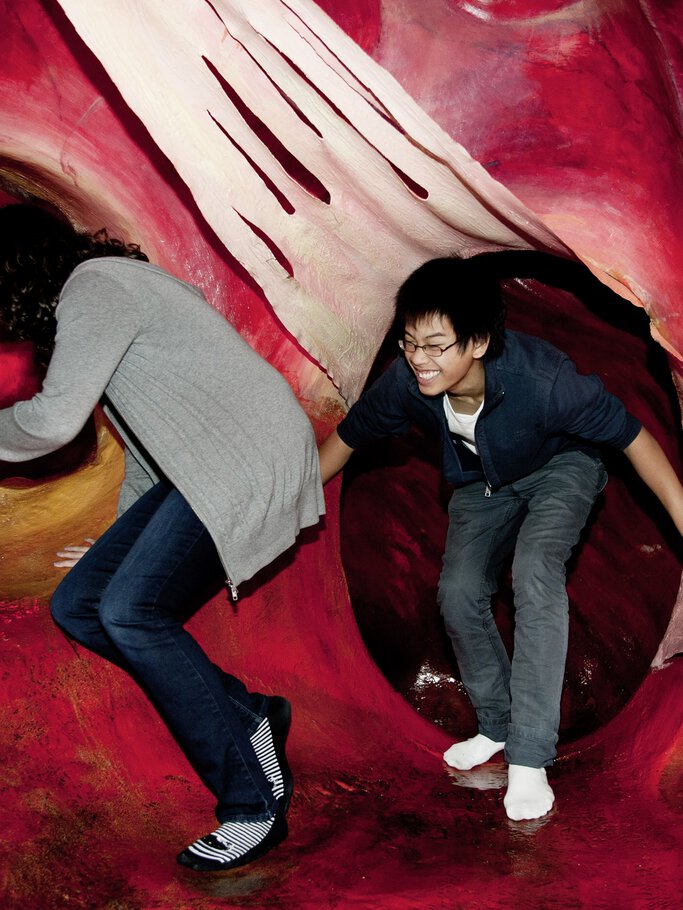
Thanks to the "Begehbare Herz" area, children can understand the heart in a whole new way. © KAF/Andreas Reeg
- ${title}${badge}
